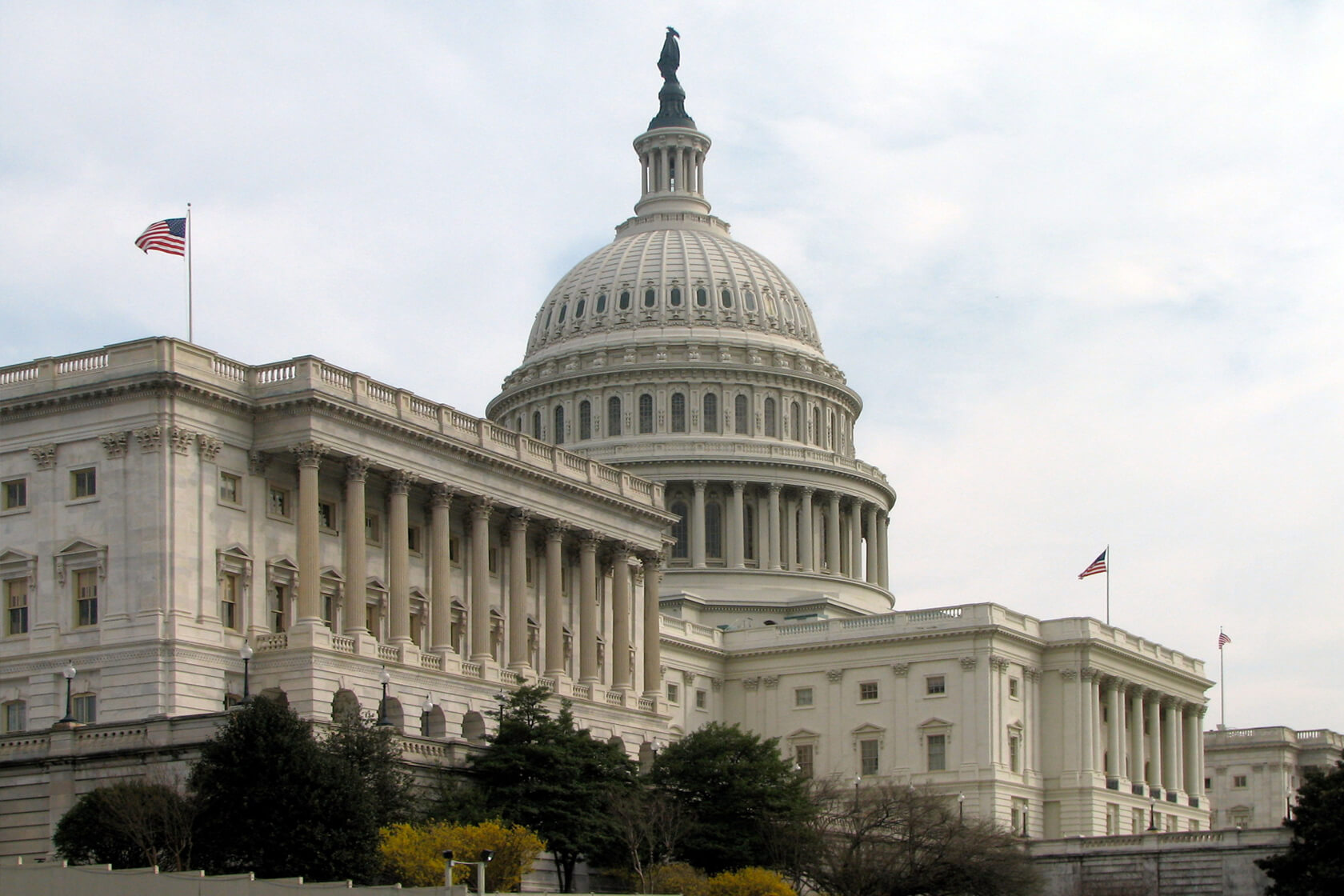West Long Branch, NJ – Americans are evenly divided between those who approve of the filibuster, those who disapprove of it, and those who have no opinion. The Monmouth (“Mon-muth”) University Poll also finds that nearly 4 in 10 favor reforming how the U.S. Senate uses the filibuster while about 2 in 10 want to eliminate it altogether. Public opinion is also divided on whether specific types of legislation should be subject to a filibuster, including spending and tax bills – a category that includes two major packages recently proposed by the Biden administration. Also, nearly half of the public would leave in place the 60-vote cloture threshold to stop a filibuster. Few Americans, though, say they are very familiar with how the filibuster works and a small but measurable number offer seemingly contradictory responses to certain questions about reform.
One-third of Americans approve (34%) and one-third disapprove (34%) of the filibuster when it is described as a procedure used in the Senate to block a bill from being put to a vote until a supermajority of 60 senators agree to end debate. Another third (33%), though, have no opinion either way. A majority of Republicans (61%) approve of the filibuster and just 13% disapprove of it. Only 9% of Democrats approve of the filibuster, while a majority (54%) disapprove. Independents are relatively more divided between approve (38%) and disapprove (30%).
“As with everything else in American politics, opinion on the filibuster is subject to a sharp partisan divide. However, there is a sizable chunk of the public that hasn’t really given it a lot of thought,” said Patrick Murray, director of the independent Monmouth University Polling Institute.
Nearly 4 in 10 Americans (38%) want to keep the filibuster in its current form with no changes, while a majority either think the Senate should reform how it can be used (38%) or get rid of it entirely (19%). Most Democrats would like to see some changes, including 49% who want reforms and 30% who want it eliminated entirely. Just 14% of Democrats want to leave the filibuster as is. Nearly two-thirds (64%) of Republicans think the filibuster should not be changed at all while about one-third are open to either some reforms (22%) or elimination (10%). Four in ten (41%) independents want the filibuster kept as is, 38% are in favor of reform, and 16% prefer elimination.
Those polled who initially say they disapprove of the filibuster are split between wanting to get rid of it entirely (50%) and wanting to keep it with reforms (46%). Among those who approve of the filibuster, three-quarters (76%) do not want it to be changed, but 22% want some changes made to how it can be used. Among those who initially express no opinion of the filibuster, a little under half (45%) think it should be kept with some reforms, one-third (34%) want it kept with no changes, and just 7% want to get rid of it entirely.
The poll asked about using the filibuster to stop six different types of bills. About half of the public supports using the filibuster to block bills on federal tax rate changes (52%), new programs and spending (50%), gun control (48%), raising the minimum wage (47%), immigration (46%), and election rules and voting rights (46%). Between 41% and 48% oppose using the filibuster for any of these purposes. A solid majority of Republicans support using the filibuster to block these six types of bills while a solid majority of Democrats oppose using the filibuster in these situations.
“There isn’t a lot of difference in opinion, but it is ironic that support registers a few points higher for applying the filibuster to tax and spending bills that the Senate can already maneuver around. They used the reconciliation process once this year to pass the Covid stimulus, and will probably need to use it again for Biden’s infrastructure and healthcare plans,” said Murray.
The poll also asked about using the filibuster to block the appointment of nominees. Just over 4 in 10 support using the filibuster to stop the appointment of someone to the president’s cabinet (41%, with 52% opposed) and the appointment of a federal judge (43%, with 50% opposed). In this case, majority public opinion is close to Senate rules, which were changed in the last decade to prevent use of the filibuster on both types of nominations. Regardless, a majority of Republicans support using the filibuster to stop these appointments and a majority of Democrats oppose this use of the filibuster.
If the Senate decides to keep the filibuster, nearly half (46%) of Americans think the threshold required to break a filibuster should stay at 60 votes. About one-third (32%) think the threshold should be lowered to less than 60 while 16% would actually raise it above 60. Among those who approve of the filibuster, 74% want to keep the threshold as is, but 16% think it should be raised above 60 votes and 8% think it should be lowered below that. Among those who disapprove of the filibuster, 67% want the threshold lowered below 60 votes, 15% support leaving it at 60, and 12% would actually like to see it raised. Half (49%) of those with no opinion of the filibuster want to keep the 60-vote threshold, 20% say it should be lowered, and 21% say it should be raised.
In addition to the 12% who disapprove of the filibuster but say they actually want a higher – or tougher – cloture threshold, 16% who disapprove say they support using the filibuster in at least half of the 8 bill or appointment scenarios presented in the poll. By the same token, 20% of people who approve of the filibuster in general say they oppose its use in at least half of these legislative situations.
“It’s really important to put these numbers in context. A sizable proportion of the public doesn’t pay close attention to how the filibuster actually works. That leads to some contradictory views on filibuster reforms and a default position for many to stick with the status quo,” said Murray.
Just 1 in 5 (19%) Americans say they are very familiar with how the Senate filibuster works while another 40% are somewhat familiar. Slightly over 1 in 10 are not too (10%) or not at all (2%) familiar with it and another 29% have not heard of the filibuster at all. Americans who are at least somewhat familiar with the filibuster are split between approving of it (45%) and disapproving of it (41%), while 15% have no opinion. Those who are unfamiliar or have not heard of the filibuster are much more likely to hold no opinion of it (58%) than either approve (18%) or disapprove (24%) of it.
Americans who are 55 or older (67%) are much more likely to be at least somewhat familiar with the filibuster process than younger Americans (48% of those 18 to 34 and 58% of those 35 to 54). White Americans (64%) are more likely than Americans of color (47%) to be familiar with the filibuster, as are people with a college degree (74%) compared to those without one (52%). There are no significant differences in familiarity by party.
The Monmouth University Poll was conducted by telephone from April 8 to 12, 2021 with 800 adults in the United States. The question results in this release have a margin of error of +/- 3.5 percentage points. The poll was conducted by the Monmouth University Polling Institute in West Long Branch, NJ.
Carolyn Lau, Research Associate, assisted with development of the questions and analysis for this report.
QUESTIONS AND RESULTS
(* Some columns may not add to 100% due to rounding.)
[Q1-16 previously released.]
17.Have you heard of the Senate filibuster before, or not? [If YES:] How familiar are you with how the Senate filibuster works – very familiar, somewhat familiar, not too familiar, or not at all familiar?
| April 2021 | |
| Very familiar | 19% |
| Somewhat familiar | 40% |
| Not too familiar | 10% |
| Not at all familiar | 2% |
| Not heard of Senate filibuster | 29% |
| (n) | (800) |
18.A filibuster is a procedure used in the Senate to block a bill from being put to a vote until a supermajority of 60 senators agree to end debate on it. In general, do you approve or disapprove of the filibuster, or do you have no opinion?
| April 2021 | |
| Approve | 34% |
| Disapprove | 34% |
| No opinion | 33% |
| (n) | (800) |
19.Do you think the Senate should get rid of the filibuster entirely, keep it but reform how it can be used, or keep it as is with no changes?
| April 2021 | |
| Get rid of entirely | 19% |
| Keep but with reforms | 38% |
| Keep with no changes | 38% |
| (VOL) Don’t know | 6% |
| (n) | (800) |
20.I’m going to read you some types of Senate actions. Do you support or oppose allowing the filibuster to be used to stop? [ITEMS WERE ROTATED]
Support | Oppose | (VOL) Depends | (VOL) Don’t know | (n) | |
| A gun control bill | 48% | 48% | 1% | 3% | (800) |
| An immigration bill | 46% | 47% | 3% | 4% | (800) |
| A bill on election rules and voting rights | 46% | 46% | 3% | 4% | (800) |
| A bill to raise the minimum wage | 47% | 48% | 2% | 3% | (800) |
| A bill to change federal tax rates | 52% | 41% | 2% | 5% | (800) |
| A bill to create new programs and spending | 50% | 45% | 2% | 3% | (800) |
| The appointment of someone to the president’s cabinet | 41% | 52% | 1% | 5% | (800) |
| The appointment of a federal judge | 43% | 50% | 2% | 5% | (800) |
21.If the Senate keeps the filibuster, do you think the threshold required to break a filibuster and bring a bill up for a vote should stay at 60 votes, should it be raised above 60 votes, or should it be lowered below 60 votes?
| April 2021 | |
| Stay at 60 | 46% |
| Raised above 60 | 16% |
| Lowered below 60 | 32% |
| (VOL) Don’t know | 6% |
| (n) | (800) |
[Q22-32 previously released.]
METHODOLOGY
The Monmouth University Poll was sponsored and conducted by the Monmouth University Polling Institute from April 8 to 12, 2021 with a national random sample of 800 adults age 18 and older. This includes 278 contacted by a live interviewer on a landline telephone and 522 contacted by a live interviewer on a cell phone, in English. Telephone numbers were selected through a mix of random digit dialing and list-based sampling. Landline respondents were selected with a modified Troldahl-Carter youngest adult household screen. Monmouth is responsible for all aspects of the survey design, data weighting and analysis. The full sample is weighted for region, age, education, gender and race based on US Census information (ACS 2018 one-year survey). Data collection support provided by Braun Research (field), Dynata (RDD sample), and Aristotle (list sample). For results based on this sample, one can say with 95% confidence that the error attributable to sampling has a maximum margin of plus or minus 3.5 percentage points (unadjusted for sample design). Sampling error can be larger for sub-groups (see table below). In addition to sampling error, one should bear in mind that question wording and practical difficulties in conducting surveys can introduce error or bias into the findings of opinion polls.
| DEMOGRAPHICS (weighted) |
| Self-Reported |
| 23% Republican |
| 45% Independent |
| 32% Democrat |
| 48% Male |
| 52% Female |
| 30% 18-34 |
| 33% 35-54 |
| 37% 55+ |
| 64% White |
| 12% Black |
| 16% Hispanic |
| 8% Asian/Other |
| 70% No degree |
| 30% 4 year degree |
Click on pdf file link below for full methodology and crosstabs by key demographic groups.




